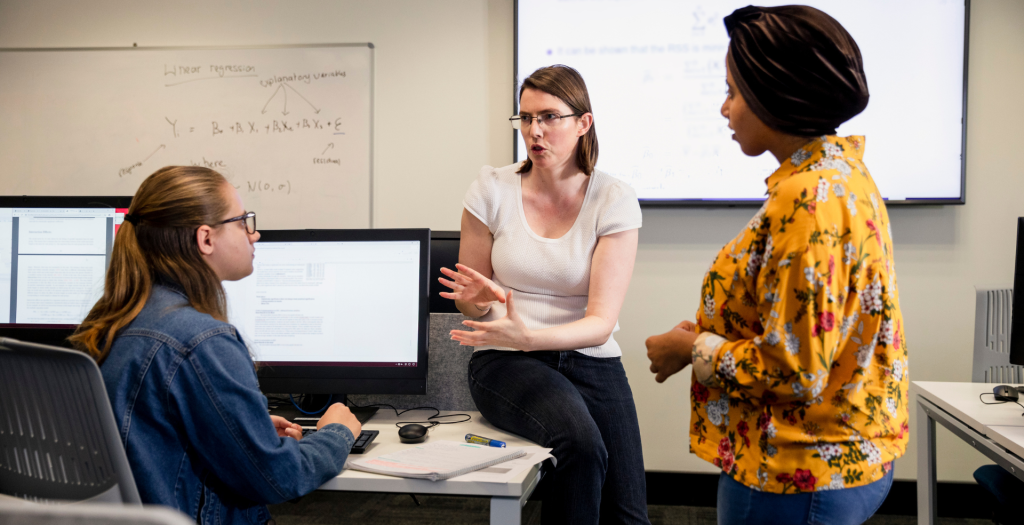Lesson Study is a model of collaborative enquiry originating from Japan that is becoming increasingly popular around the world as a way to enhance classroom practice. When carried out effectively, Lesson Study has the potential to transform teacher practice and improve pupil learning. Lesson Study can also support developing trust and build a sense of collective efficacy amongst staff. However, when implemented incorrectly, there is a risk of adding to an already heavy teacher workload, demotivating teachers and failing to make any difference to pupils’ outcomes.
The Historical context of Lesson Study
In Japan, Lesson Study is intrinsic to the professional culture within primary schools and plays a central role in common educational reforms such as curriculum development and teacher training. It has been a part of school, district and government wide strategy for improving pupil learning, putting student-centred learning at the heart of pedagogical discussion since the late 1800s. Lesson Study has evolved over a period of 100 years in Japan, and it is clear that Lesson Study as a professional culture in Japanese education has a long history (Fukaya et al., 2010). Lesson Study has its origins in the Meiji era (1868-1912), where due to the nature and small size of schools, teachers set up regional learning groups to collaborate around teaching practice, administration, behaviour and working rights. Research suggests that during the 1800s the regional working groups began setting up “Lesson Study groups”, which also coincided with the professionalization of teacher training colleges and a growing alumni of the lesson study groups working throughout the Japanese elementary system (Fukaya et al., 2010).
Despite an increasingly nationalistic and rigid curricula throughout the early twentieth century, Lesson Study continued to evolve. There were opportunities being created for teachers to engage in classroom enquiry, and the unique role of mimeograph machines meant that teachers were able to print out, share and review lesson plans and analysis (Fukaya et al., 2010). This student-centred approach to instruction continued throughout the twentieth century in Japan, with a major reform movement in the teaching and learning of mathematics occurring during the 1970s and 1980s (Takahashi, 2000). This has led to Japan using the powerful approach of problem solving to develop mathematical concepts and skills in their students. This was noted by Stigler and Hiebert in their influential book, The Teaching Gap, often credited with introducing Lesson Study to the U.S.;
“In Japan, teachers appear to take a less active role, allowing their students to invent their own procedures for solving problems. And these problems are quite demanding, both procedurally and conceptually. Teachers, however, carefully design and orchestrate lessons so that students are likely to use procedures that have been developed recently in class. An appropriate motto for Japanese teaching would be ‘structured problem solving’.” (Stigler & Hiebert, 1999)
Lesson Study played a distinct role with Japanese teachers, researchers and administrators working collaboratively to develop this problem solving approach to mathematical instruction.
Can Lesson Study work outside of Japan?
Lesson Study has been gaining popularity throughout the UK as a type of professional development and school improvement more broadly. However, adapting Lesson Study for UK schools is not without its difficulties. While Lesson Study is central to teacher development and the professional culture of teaching in Japan, historically in England, teachers are used to a top-down culture of CPD. Moreover, within an accountability culture where lesson grading and observations are still common practice, trying to shift the focus of those observations from having an emphasis on teacher practice and performance, to one of pupil learning and progress, can be difficult without a developmental culture. There are also broader questions around Lesson Study – its potential impact and the challenges and limitations of implementing it successfully in the UK. Dr Gary Jones outlined some of these in his presentation at the WALS Conference in 2016, where he suggested that although Lesson Study shares many of the key features of effective CPD, there are significant issues around the quality of Lesson Study taking place in some schools.
This sentiment is also discussed by Akihiko Takahashi and Thomas McDougal in their 2016 article Collaborative Lesson Research: maximising the impact of lesson study. The authors contend that there are certain institutional structures and practices that are essential for effective Lesson Study, but that often these elements are missing from Lesson Study outside of Japan (Takahashi 2016). Ultimately, Takahashi and McDougal introduce a new term Collaborative Lesson Research to describe a form of Lesson Study that includes the following features:
1. A clear research purpose
2. Kyouzai kenkyuu (the careful study of academic content and teaching materials)
3. A written research proposal
4. A live research lesson and discussion
5. Knowledgeable others
6. Sharing of results
By identifying and detailing these features, the authors hope to clearly articulate the authentic principles of Lesson Study, conscious that since the early 2000s, the process has been adapted elsewhere unevenly leading to lesson study without substance. The purpose of Lesson Study should always be focussed on improving specific, identified pupil outcomes, and is a “process for accomplishing specific teaching-learning goals.” (Takahashi, 2016) What is evident, is that within Japan, Lesson Study plays an integral part in school-based professional development programs, and there is over a century of institutional, procedural and cultural structures that have evolved to support it.

Teacher Development Trust and support for Lesson Study
Here at the Teacher Development Trust, we have been supporting schools to implement Lesson Study since the formation of TDT Network in 2013. Our national Network of over 220 schools is working to transform professional development and learning. Our Developing Great Teaching report, a systematic review of the international evidence on professional development, was published in 2015.
The report highlighted key findings including that professional development opportunities that are carefully designed and have a strong focus on pupil outcomes have a significant impact on student achievement. The report also highlighted the importance of peer collaboration that is sustained and iterative, the role of expert external challenge, and the significance of subject or topic-specific content pedagogy and how students learn. There are clear links between the established evidence for effective professional development, and the process of Lesson Study when implemented with fidelity to the Japanese model. We therefore consider the Lesson Study model to be highly plausibly aligned with the evidence base around effective professional development.
We have seen many of our schools improve both teacher practice and pupil learning through implementing our TDT model of Lesson Study, as well as contributing to a developmental and open culture in many of our schools, creating teacher self-efficacy. Some of our schools have taken a particularly innovative approach, such as at Central Primary School, where under the work of Head teacher, John Mynott, the school has explored introducing key Japanese concepts of instruction such as neriage (extensive, facilitated classroom discussion) within particular phases and subjects.
But how to address the significant contextual barriers to ensure Lesson Study is implemented effectively? It is important to think about the entry point at both an organisational and practitioner level when opting for a Lesson Study approach.
A school that has embedded, for example, Dylan Wiliam’s model of Teacher Learning Communities over a period of 7 years with a stable leadership team and Ofsted rating, is going to have a different set of challenges to that of a school that is used to traditional one-off Insets and has had new leadership brought in following a difficult Ofsted inspection. However, both might look to implement Lesson Study to drive forward teaching and learning, and improve pupil outcomes. Arguably, the approach tried in each school would look very different.
Similarly, an RQT completing their Masters will bring different strengths to a potential Lesson Study group, than a very experienced practitioner with over 20 years classroom experience who is less confident engaging with research. Both will have a different set of strengths, and it is important to consider who to initially involve in the early stages of introducing Lesson Study.

Jessica Brosnan is a former Senior Network Programme Officer for TDT Network at the Teacher Development Trust, the national charity for professional learning in schools. She is a former Music teacher and works with schools on developing their CPD processes. Follow her on X at @jessmbrosnan
References
Jones, G. (2016). A Future for Lesson Study: Challenges and limitations. In: World Association of Lesson Studies (WALS) International Conference 2016. Available at: https://www.slideshare.net/GaryJones31/v5-wals-and-lesson-study-2016-65658506 [Accessed 4th March 2017]
Fukaya, K., Sarkar Arani M. and Lassegard, J. (2010). “Lesson Study as Professional Culture in Japanese Schools: An Historical Perspective on elementary classroom practices. Japan Review, 22(1), pp. 171-200
Stigler, J. and Hiebert, J. (1999). The Teaching Gap: Best ideas from the world’s teachers for improving education in the classroom. New York: Free Press.
Takahashi, A. (2006). Characteristics of Japanese Mathematics Lessons. Tsukuba Journal of Educational Study in Mathematics, 27(3), pp. 37- 44
Takahashi, A. and McDougal, T. (2016). Collaborative Lesson Research. ZDM Mathematics Education, 48(4), pp. 513- 526


